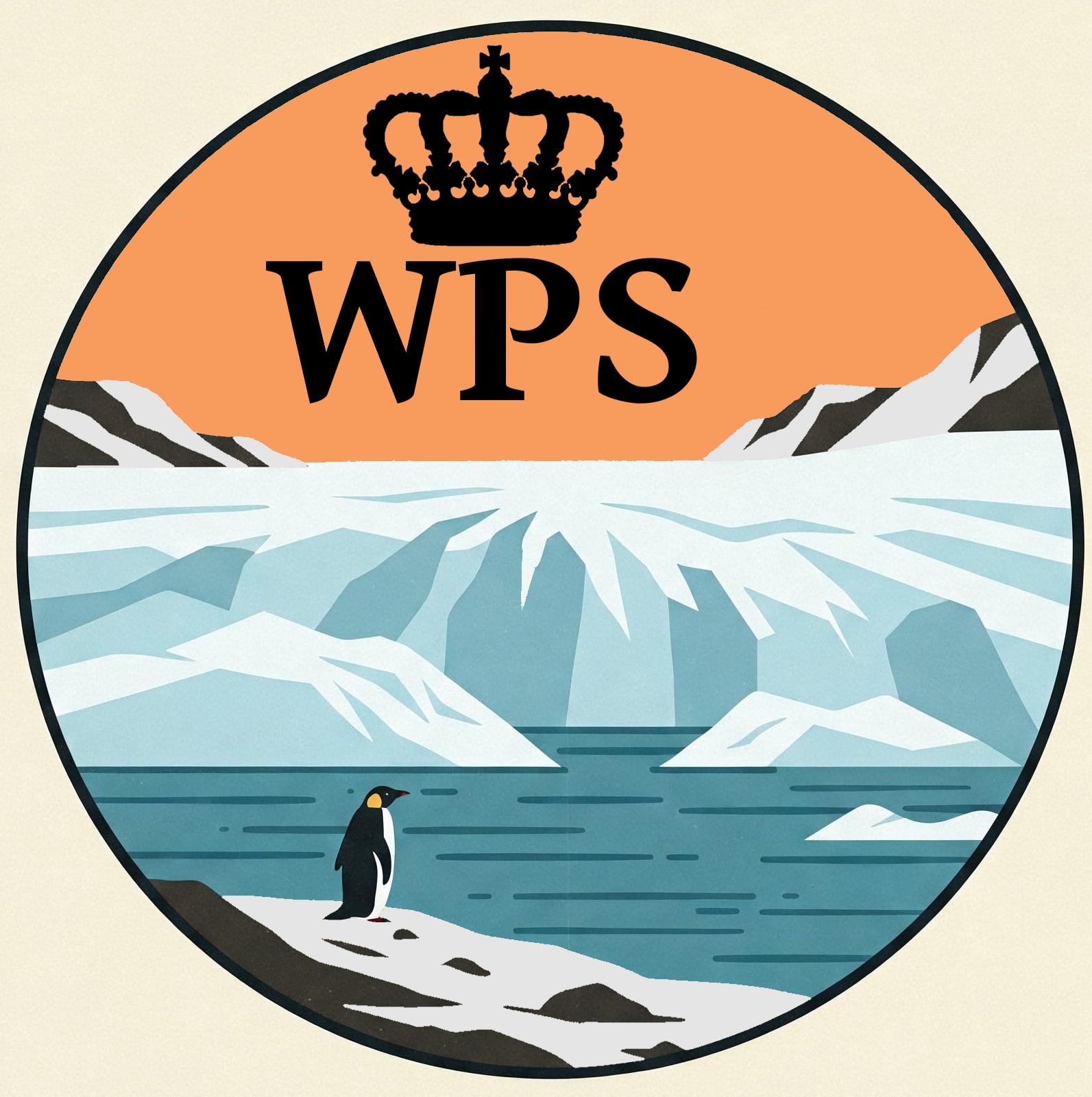Difference between revisions of "Westarctican Parks Service"
m (→Creation of the Westarctican Parks Service: modified phrasing) |
|||
| (22 intermediate revisions by 2 users not shown) | |||
| Line 1: | Line 1: | ||
The '''Westarctican Parks Service''' ( | [[File:WPS logo.jpeg|thumb|Logo for the Westarctican Parks Service]] | ||
The '''Westarctican Parks Service''' (often abbreviated to '''WPS''') is an agency within the [[Government of Westarctica]] that was formally authorized on 6 October 2023. Although there was considerable work done behind the scenes to get the agency up and running, no public-facing activity occurred until 20 April 2025, when [[Grand Duke Travis]] enshrined the first five protected areas. | |||
== | ==Administration== | ||
The Parks Service is overseen by the office of the Director. This position is filled by the Sovereign and has been held by [[Duke of the Bear Peninsula|Jordan Farmer]] since 21 June 2025. The WPS is an independent agency within the [[Government of Westarctica|Westarctican government]], with the Director reporting directly to Grand Duke Travis. Although independent, the legislation creating it does allow for it to be administered through the Ministry of Conservation, at the Sovereign's discretion. | |||
==History of the Westarctican Parks Service== | |||
An administrative agency for a national park system in Westarctica had been discussed as a goal as early as 2018, when some informal conceptualizing took place between the Ministers of [[Minister of Conservation|Conservation]] and [[Minister of Citizenship|Citizenship & Immigration]]. It was brought up a handful of times over the next few years, always being well-recieved, but never being taken up as an earnest endeavor until the Summer of 2023, when a bill was introduced before the [[Senate of Westarctica|Senate]] by then Senator [[Duke of the Bear Peninsula|Jordan Farmer]]. It was passed and signed into law on 6 October of that year. | An administrative agency for a national park system in Westarctica had been discussed as a goal as early as 2018, when some informal conceptualizing took place between the Ministers of [[Minister of Conservation|Conservation]] and [[Minister of Citizenship|Citizenship & Immigration]]. It was brought up a handful of times over the next few years, always being well-recieved, but never being taken up as an earnest endeavor until the Summer of 2023, when a bill was introduced before the [[Senate of Westarctica|Senate]] by then Senator [[Duke of the Bear Peninsula|Jordan Farmer]]. It was passed and signed into law on 6 October of that year. | ||
Despite there being no public-facing movement | Despite there being no public-facing movement for more than a year and a half, a great deal of work was taking place behind the scenes to identify, research, evaluate, and categorize potential sites for protection under the WPS. More than fifty areas were considered for protection in Westarctica, [[Calsahara]], and the [[Balleny Islands]]. A finalized list of recommended locations, justifications, and boundaries for the first five sites for protection was provided to [[Grand Duke Travis]] in March of 2025, which were granted protection the following month, with an additional seven added in August of that same year. | ||
There are more than two dozen forthcoming areas that are at least under review for potential protection under the WPS. These range from the initial evaluation of the merits to being in the finalization for recommendation to the Grand Duke. Seven additional recommendations were made to Grand Duke Travis in May of 2025. | |||
On 10 June 2025, Westarctica enshrined its first national park, when it combined the adjacent areas of Billboard National Monument and Boyd Glacier Conservation Zone to become [[Boyd Glacier National Park]]. | |||
==Areas Protected by the WPS== | ==Areas Protected by the WPS== | ||
The eleven sites protected by the Parks Service fall into three categories: National Parks, National Monuments, and Conservation Areas. | |||
===National Parks=== | ===National Parks=== | ||
National Parks are to be considered the "crown jewels" of Westarctican conservation and receive the highest level of inherent protections and preservation. Special consideration is to be taken to balance conservation concerns with the potential impacts of ecotourism that accompanies national parks worldwide. National parks can only be created via legislation. When created by "upgrading" an existing monument or conservation zone, a veto by the Sovereign can be overridden. When legislation attempts to create a new protected site or reworks the boundaries of existing sites within the WPS, a potential Sovereign veto cannot be overridden. | National Parks are to be considered the "crown jewels" of Westarctican conservation and receive the highest level of inherent protections and preservation. Special consideration is to be taken to balance conservation concerns with the potential impacts of ecotourism that accompanies national parks worldwide. National parks can only be created via legislation. When created by "upgrading" an existing monument or conservation zone, a veto by the Sovereign can be overridden. When legislation attempts to create a new protected site or reworks the boundaries of existing sites within the WPS, a potential Sovereign veto cannot be overridden. | ||
On 1 June 2025, legislation was introduced in the [[Senate of Westarctica]] to create the first National Park. The bill was introduced by Senator Hann Dougie, after collaborating with the WPS to finalize the language. This [[Westarctican Ordinance]] combined the the Billboard National Monument and the Boyd Glacier Conservation Zone into one National Park. It was signed into law on 10 June 2025 by [[Grand Duke Travis]]. | |||
{| class="wikitable" style="width:90%; background:white; border:#4682B4 solid;" | |||
|- | |||
! Name || Date Established || Area || Description | |||
|- | |||
| <br><center>[[Boyd Glacier National Park]]<br>[[File:The Billboard1 - Sarnoff mts.jpg|frameless|upright=.9]]</center><br>|| 10 June 2025 || 453,700 acres<br>(1,836 sq. km) || Protects a significant glacial formation in Westarctica, which studies show is among the nation's more stable. as well as the [[The Billboard|Billboard]], which is one of Westarctica's most iconic features, as well as a portion of the surrounding [[Sarnoff Mountains]]. Originally protected on 20 April 2025 as Billboard National Monument and Boyd Glacier Conservation Zone. | |||
|} | |||
===National Monuments=== | ===National Monuments=== | ||
National Monuments are sites that warrant protections, though with fewer conservation concerns than those of a national park. This can be due to lower levels of ecotourism, having a less fragile ecological or scientific significance, or the preservation primarily for historical reasons. A monument can be declared via decree by the Sovereign or via legislative process (which cannot override Sovereign veto). | National Monuments are sites that warrant protections, though with fewer conservation concerns than those of a national park. This can be due to lower levels of ecotourism, having a less fragile ecological or scientific significance, or the preservation primarily for historical reasons. A monument can be declared via decree by the Sovereign or via legislative process (which cannot override Sovereign veto). | ||
Westarctica currently has 5 National Monuments. This list is complete as of 8 August 2025. | |||
{| class="wikitable" style="width:90%; background:white; border:#4682B4 solid;" | |||
|- | |||
! Name || Date Established || Area || Description | |||
|- | |||
| <br><center>[[Balleny Islands National Monument]]<br>[[File:Sabrina Island South.png|frameless|upright=.9]]</center><br> || 8 August 2025 || 76,794 acres<br>(310.8 sq. km) || Includes [[Buckle Island]] and surrounding smaller islands. Within its boundaries are two Important Bird Areas, including Westarctica's morthernmost Adélie penguin colony and its largest rookery for chinstrap penguins. Significant numbers of orca have been observed within the monument's waters. | |||
|- | |||
| <br><center>[[Byrd Station National Monument]]<br>[[File:Byrd-tunnel.jpg|frameless|upright=.9]]</center><br> || 8 August 2025 || 16,000 acres<br>(64.7 sq. km) || [[Byrd Station]] is a mothballed Cold War-era research station, which was operated by the United States and whose activities within Westarctica incur additional diplomatic concerns with that nation. Preservation as a National Monument allows Westarctica more control and advantage in potential dealings with the US, on top of protecting the scientific history of the nation. | |||
|- | |||
| <br><center>[[Calsahara National Monument]]<br>[[File:Seven seas of rhye1.jpg|frameless|upright=.9]]</center><br> || 8 August 2025 || 19.3 acres<br>(0.08 sq. km) || Located along [[Calsahara|Calsahara's]] southern border, where the [[Seven Seas of Rhye|Sea of Rhye]] supports several endangered species, such as the California condor; giant kangaroo rat, longhorn fairy shrimp, and San Joaquin kit fox. Is the smallest protected area overseen by the Parks Service. | |||
|- | |||
| <br><center>[[Cape Burks National Monument]]<br>[[File:Russkaya Station.jpg|frameless|upright=.9]]</center><br> || 8 August 2025 || 150,224 acres<br>(607.9 sq. km) || [[Cape Burks]] is the site of a colony of Adélie penguins that is significant to the species’ continued survival in Westarctica, possibly the largest on the Westarctican mainland. This area also contains the mothballed Cold War-era [[Russkaya Station|Russkaya]] research station, which was operated by the Soviet Union and whose activites within Westarctica incur additional Russian diplomatic concerns. | |||
|- | |||
| <br><center>[[Gothic National Monument]]<br>[[File:Gothic-Mountains.jpg|frameless|upright=.9]]</center><br> || 20 April 2025 || 3,403,000 acres<br>(13,925 sq. km) || Preserves the Westarctican portion of the [[Gothic Mountains]], one of Antarctica's most geologically distinct mountain ranges. This includes the Westarctican Organ Pipes. The monument also preserves a number of surrounding mountains and glaciers in the area. | |||
|} | |||
===Conservation Areas=== | |||
Conservation Areas carry the lowest inherent protections under Westarctican Law, but can be tightened to be significantly higher than that of even a national park on a case-by-case basis. These sites also have the lowest public access interest. A conservation area can be declared via decree by the Sovereign or via legislative process (which cannot override Sovereign veto). | |||
Conservation Areas were named Conservation Zones until legislation changed the title of the category on 10 June 2025. | |||
===Conservation | Westarctica currently has 5 Conservation Areas. This list is complete as of 8 August 2025. | ||
Conservation | {| class="wikitable" style="width:90%; background:white; border:#4682B4 solid;" | ||
|- | |||
! Name || Date Established || Area || Description | |||
|- | |||
| <br><center>[[Hamilton Ice Piedmont Conservation Area]]<br>[[File:Calved Park Glacier.png|frameless|upright=.9]]</center><br> || 8 August 2025 || 366,175 acres<br>(1,481.6 sq. km) || Located in the eastern part of the [[Bear Peninsula]], preserves one of Westarctica's two ice piedmonts, as well as the nation's largest colony of emperor penguins at Hummer Point. | |||
|- | |||
| <br><center>[[McHenry Range Conservation Area]]<br>[[File:Mount Sidley.png|frameless|upright=.9]]</center><br> || 20 April 2025 || 40,700 acres<br>(164.7 sq. km) || The area outlines the boundaries of the [[McHenry Range]], which are valuable for the study of deep-earth magma activity in polar areas. The zone includes [[Mount Sidley]], the tallest mountain in Westarctica and the tallest volcano on the continent. | |||
|- | |||
| <br><center>[[Ross Ice Shelf Conservation Area]]<br>[[File:Ross Ice Shelf side.png|frameless|upright=.9]]</center><br> || 20 April 2025 || 7,090,000 acres<br>(31,359 sq. km) || Although only a small part of the whole, this area preserves the Westarctican portion of the [[Ross Ice Shelf]], which is the world's largest deposit of fresh-water ice. | |||
|- | |||
| <br><center>[[South Pole Scientific Conservation Area]]<br>[[File:SouthPoleStationDestinationAlpha.jpg|frameless|upright=.9]]</center><br> || 8 August 2025 || 33,507 acres<br>(135.6 sq. km) || The Amundsen-Scott South Pole Station, administered by the United States, engages in some of the most sensitive and crucial environmental scientific research on the globe. area was protected in the spirit of scientific cooperation and diplomacy and provides a degree of autonomy with Westarctican monitoring and oversight. | |||
|- | |||
| <br><center>[[Tulier Glacier Conservation Area]]<br>[[File:Hull Glacier.jpg|frameless|upright=.9]]</center><br> || 8 August 2025 || 599,172 acres<br>(2,425 sq. km) || Research indicates that [[Tulier Glacier]] is one of the older individual glacier flows contained entirely within Westarctican territory. This status places a high research value potential for ice and geologic samples contained within the ice. | |||
|} | |||
[[Category:Culture of Westarctica]] | |||
[[Category:Government of Westarctica]] | |||
[[Category:Westarctican Parks Service]] | |||
Latest revision as of 17:10, 11 August 2025
The Westarctican Parks Service (often abbreviated to WPS) is an agency within the Government of Westarctica that was formally authorized on 6 October 2023. Although there was considerable work done behind the scenes to get the agency up and running, no public-facing activity occurred until 20 April 2025, when Grand Duke Travis enshrined the first five protected areas.
Administration
The Parks Service is overseen by the office of the Director. This position is filled by the Sovereign and has been held by Jordan Farmer since 21 June 2025. The WPS is an independent agency within the Westarctican government, with the Director reporting directly to Grand Duke Travis. Although independent, the legislation creating it does allow for it to be administered through the Ministry of Conservation, at the Sovereign's discretion.
History of the Westarctican Parks Service
An administrative agency for a national park system in Westarctica had been discussed as a goal as early as 2018, when some informal conceptualizing took place between the Ministers of Conservation and Citizenship & Immigration. It was brought up a handful of times over the next few years, always being well-recieved, but never being taken up as an earnest endeavor until the Summer of 2023, when a bill was introduced before the Senate by then Senator Jordan Farmer. It was passed and signed into law on 6 October of that year.
Despite there being no public-facing movement for more than a year and a half, a great deal of work was taking place behind the scenes to identify, research, evaluate, and categorize potential sites for protection under the WPS. More than fifty areas were considered for protection in Westarctica, Calsahara, and the Balleny Islands. A finalized list of recommended locations, justifications, and boundaries for the first five sites for protection was provided to Grand Duke Travis in March of 2025, which were granted protection the following month, with an additional seven added in August of that same year.
There are more than two dozen forthcoming areas that are at least under review for potential protection under the WPS. These range from the initial evaluation of the merits to being in the finalization for recommendation to the Grand Duke. Seven additional recommendations were made to Grand Duke Travis in May of 2025.
On 10 June 2025, Westarctica enshrined its first national park, when it combined the adjacent areas of Billboard National Monument and Boyd Glacier Conservation Zone to become Boyd Glacier National Park.
Areas Protected by the WPS
The eleven sites protected by the Parks Service fall into three categories: National Parks, National Monuments, and Conservation Areas.
National Parks
National Parks are to be considered the "crown jewels" of Westarctican conservation and receive the highest level of inherent protections and preservation. Special consideration is to be taken to balance conservation concerns with the potential impacts of ecotourism that accompanies national parks worldwide. National parks can only be created via legislation. When created by "upgrading" an existing monument or conservation zone, a veto by the Sovereign can be overridden. When legislation attempts to create a new protected site or reworks the boundaries of existing sites within the WPS, a potential Sovereign veto cannot be overridden.
On 1 June 2025, legislation was introduced in the Senate of Westarctica to create the first National Park. The bill was introduced by Senator Hann Dougie, after collaborating with the WPS to finalize the language. This Westarctican Ordinance combined the the Billboard National Monument and the Boyd Glacier Conservation Zone into one National Park. It was signed into law on 10 June 2025 by Grand Duke Travis.
| Name | Date Established | Area | Description |
|---|---|---|---|
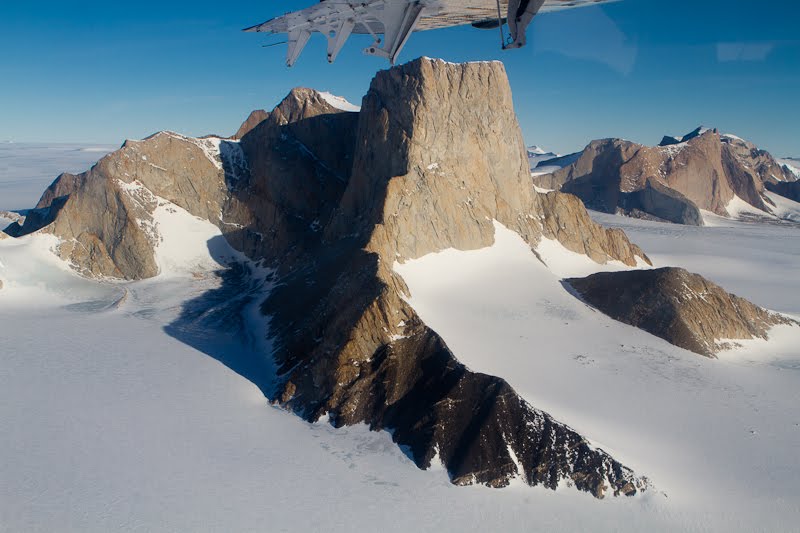 |
10 June 2025 | 453,700 acres (1,836 sq. km) |
Protects a significant glacial formation in Westarctica, which studies show is among the nation's more stable. as well as the Billboard, which is one of Westarctica's most iconic features, as well as a portion of the surrounding Sarnoff Mountains. Originally protected on 20 April 2025 as Billboard National Monument and Boyd Glacier Conservation Zone. |
National Monuments
National Monuments are sites that warrant protections, though with fewer conservation concerns than those of a national park. This can be due to lower levels of ecotourism, having a less fragile ecological or scientific significance, or the preservation primarily for historical reasons. A monument can be declared via decree by the Sovereign or via legislative process (which cannot override Sovereign veto).
Westarctica currently has 5 National Monuments. This list is complete as of 8 August 2025.
| Name | Date Established | Area | Description |
|---|---|---|---|
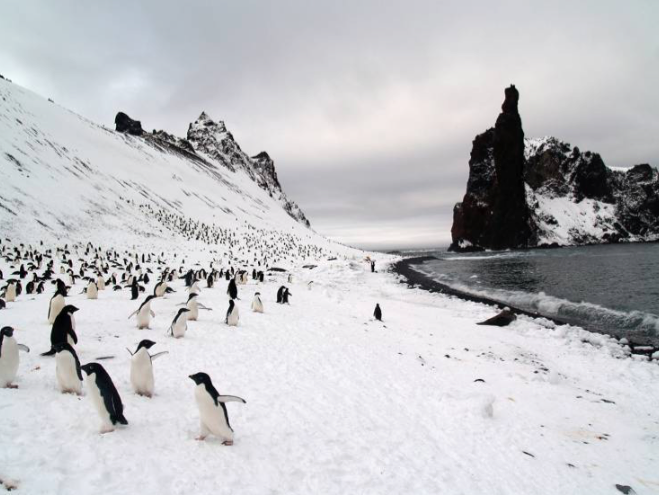 |
8 August 2025 | 76,794 acres (310.8 sq. km) |
Includes Buckle Island and surrounding smaller islands. Within its boundaries are two Important Bird Areas, including Westarctica's morthernmost Adélie penguin colony and its largest rookery for chinstrap penguins. Significant numbers of orca have been observed within the monument's waters. |
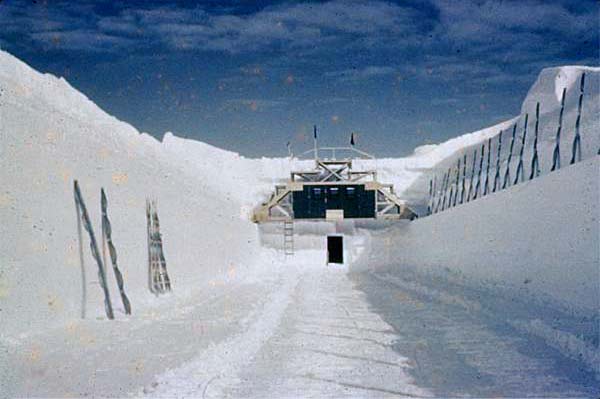 |
8 August 2025 | 16,000 acres (64.7 sq. km) |
Byrd Station is a mothballed Cold War-era research station, which was operated by the United States and whose activities within Westarctica incur additional diplomatic concerns with that nation. Preservation as a National Monument allows Westarctica more control and advantage in potential dealings with the US, on top of protecting the scientific history of the nation. |
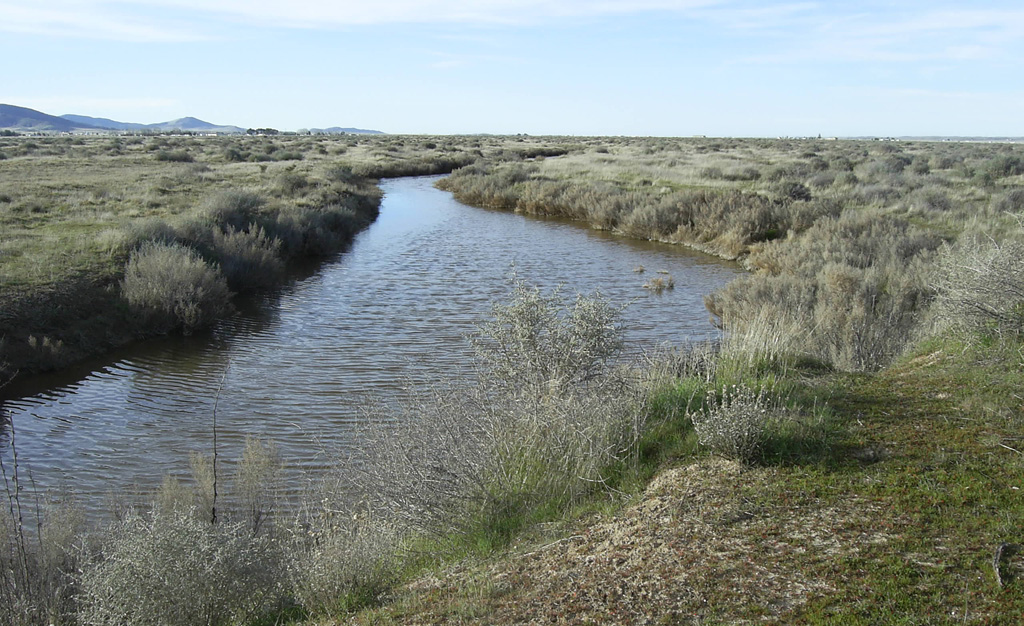 |
8 August 2025 | 19.3 acres (0.08 sq. km) |
Located along Calsahara's southern border, where the Sea of Rhye supports several endangered species, such as the California condor; giant kangaroo rat, longhorn fairy shrimp, and San Joaquin kit fox. Is the smallest protected area overseen by the Parks Service. |
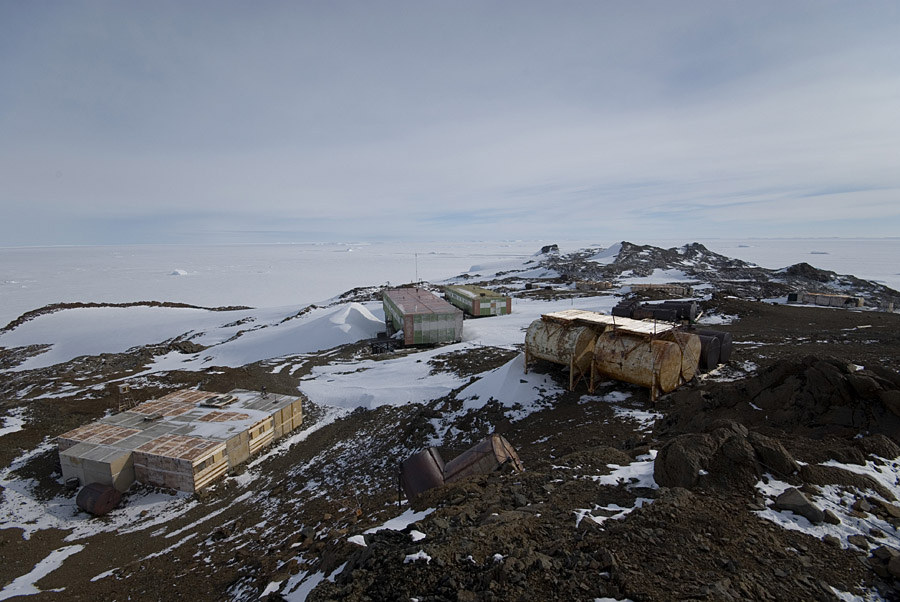 |
8 August 2025 | 150,224 acres (607.9 sq. km) |
Cape Burks is the site of a colony of Adélie penguins that is significant to the species’ continued survival in Westarctica, possibly the largest on the Westarctican mainland. This area also contains the mothballed Cold War-era Russkaya research station, which was operated by the Soviet Union and whose activites within Westarctica incur additional Russian diplomatic concerns. |
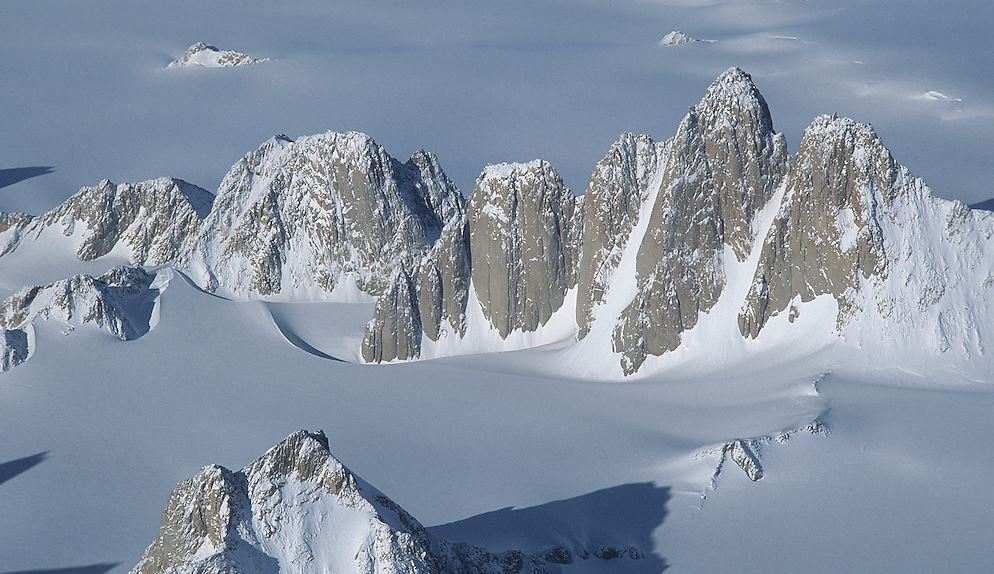 |
20 April 2025 | 3,403,000 acres (13,925 sq. km) |
Preserves the Westarctican portion of the Gothic Mountains, one of Antarctica's most geologically distinct mountain ranges. This includes the Westarctican Organ Pipes. The monument also preserves a number of surrounding mountains and glaciers in the area. |
Conservation Areas
Conservation Areas carry the lowest inherent protections under Westarctican Law, but can be tightened to be significantly higher than that of even a national park on a case-by-case basis. These sites also have the lowest public access interest. A conservation area can be declared via decree by the Sovereign or via legislative process (which cannot override Sovereign veto).
Conservation Areas were named Conservation Zones until legislation changed the title of the category on 10 June 2025.
Westarctica currently has 5 Conservation Areas. This list is complete as of 8 August 2025.
| Name | Date Established | Area | Description |
|---|---|---|---|
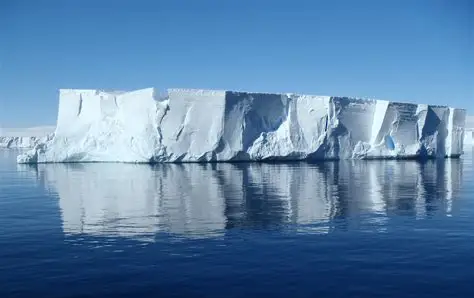 |
8 August 2025 | 366,175 acres (1,481.6 sq. km) |
Located in the eastern part of the Bear Peninsula, preserves one of Westarctica's two ice piedmonts, as well as the nation's largest colony of emperor penguins at Hummer Point. |
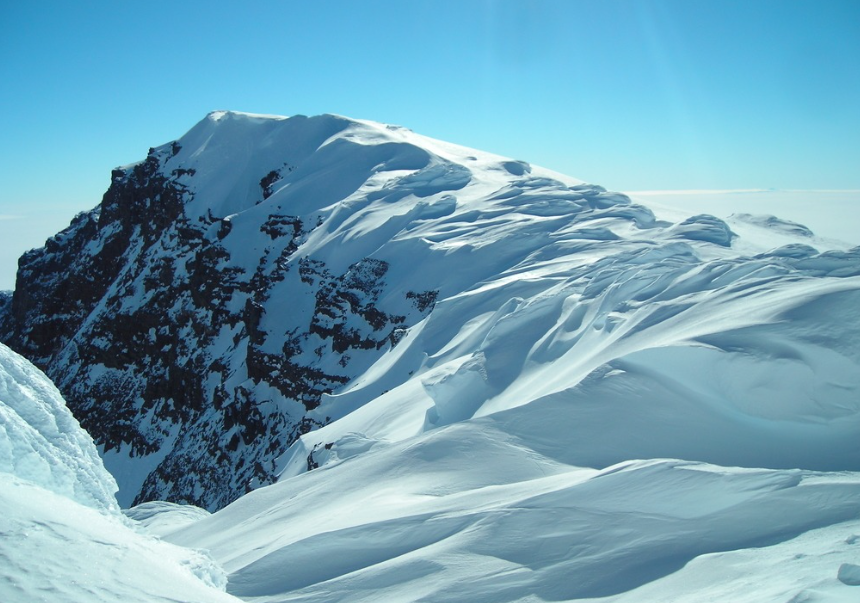 |
20 April 2025 | 40,700 acres (164.7 sq. km) |
The area outlines the boundaries of the McHenry Range, which are valuable for the study of deep-earth magma activity in polar areas. The zone includes Mount Sidley, the tallest mountain in Westarctica and the tallest volcano on the continent. |
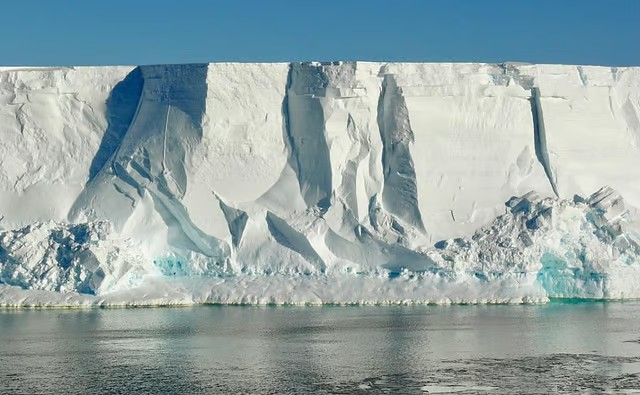 |
20 April 2025 | 7,090,000 acres (31,359 sq. km) |
Although only a small part of the whole, this area preserves the Westarctican portion of the Ross Ice Shelf, which is the world's largest deposit of fresh-water ice. |
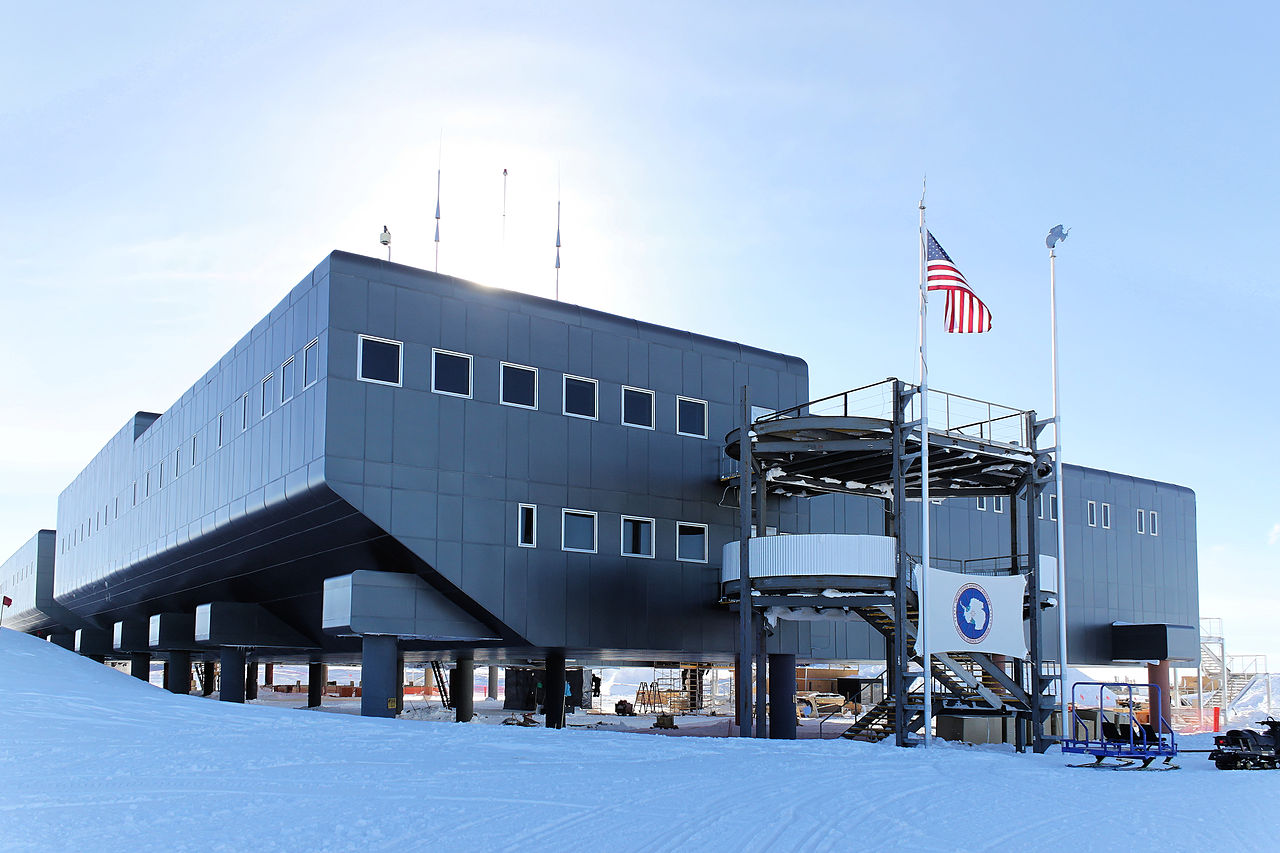 |
8 August 2025 | 33,507 acres (135.6 sq. km) |
The Amundsen-Scott South Pole Station, administered by the United States, engages in some of the most sensitive and crucial environmental scientific research on the globe. area was protected in the spirit of scientific cooperation and diplomacy and provides a degree of autonomy with Westarctican monitoring and oversight. |
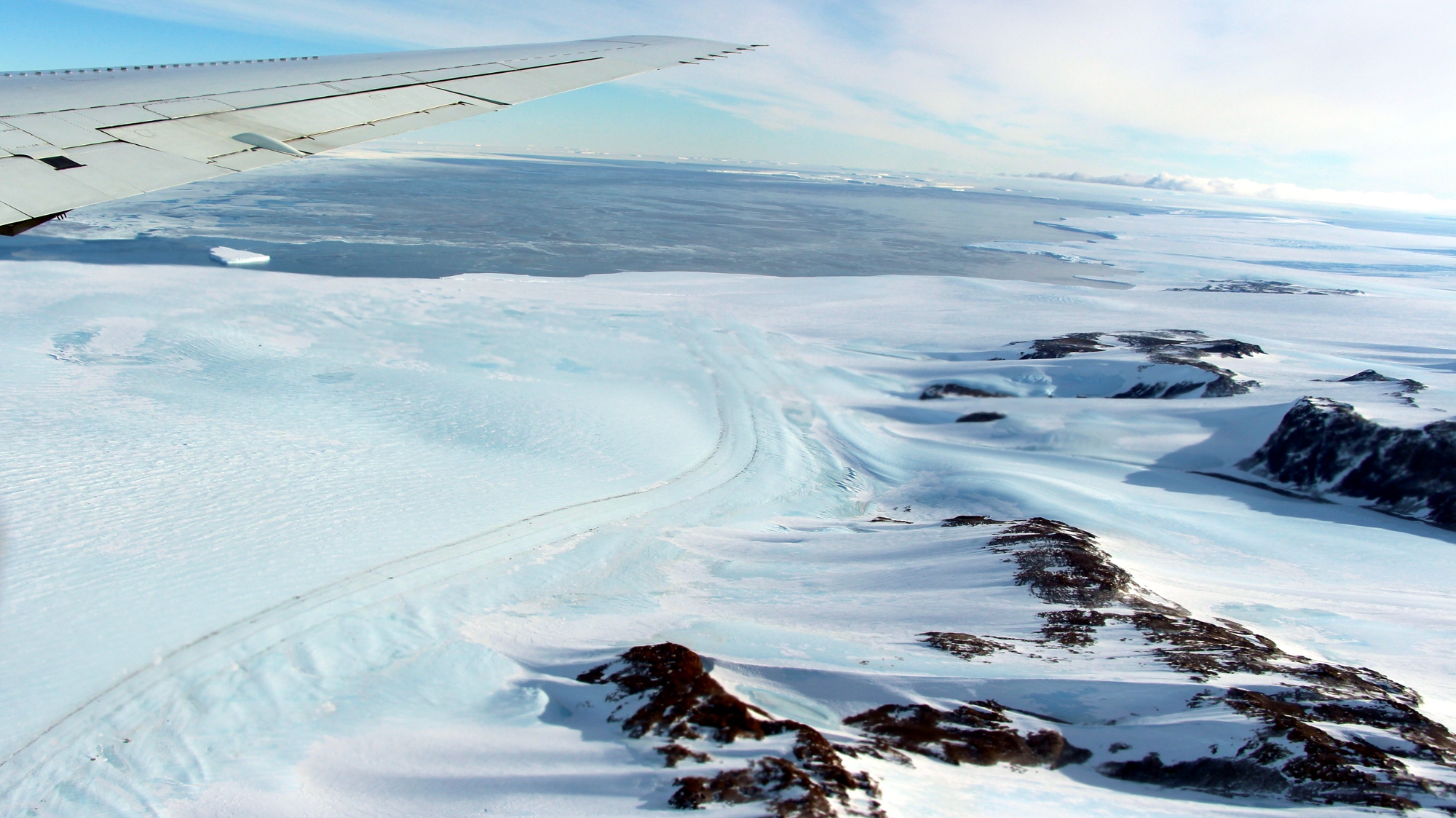 |
8 August 2025 | 599,172 acres (2,425 sq. km) |
Research indicates that Tulier Glacier is one of the older individual glacier flows contained entirely within Westarctican territory. This status places a high research value potential for ice and geologic samples contained within the ice. |
